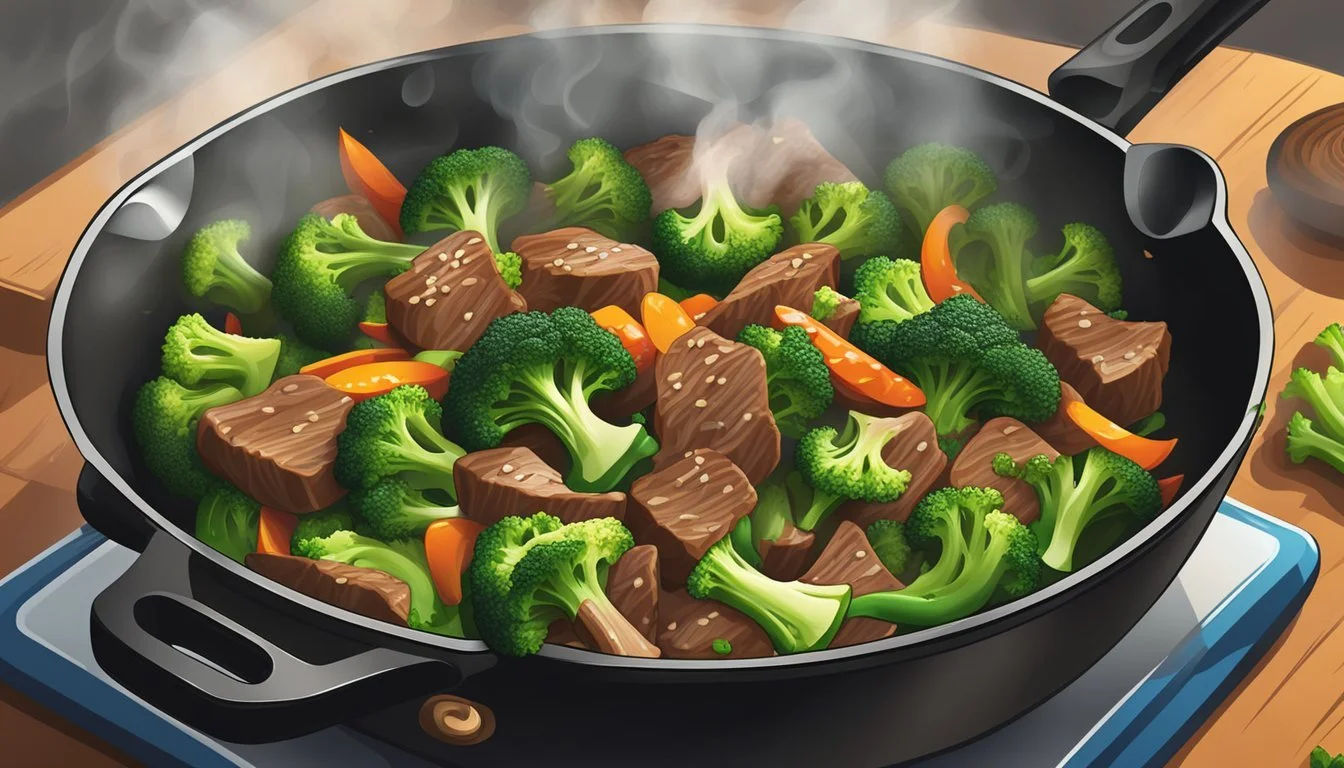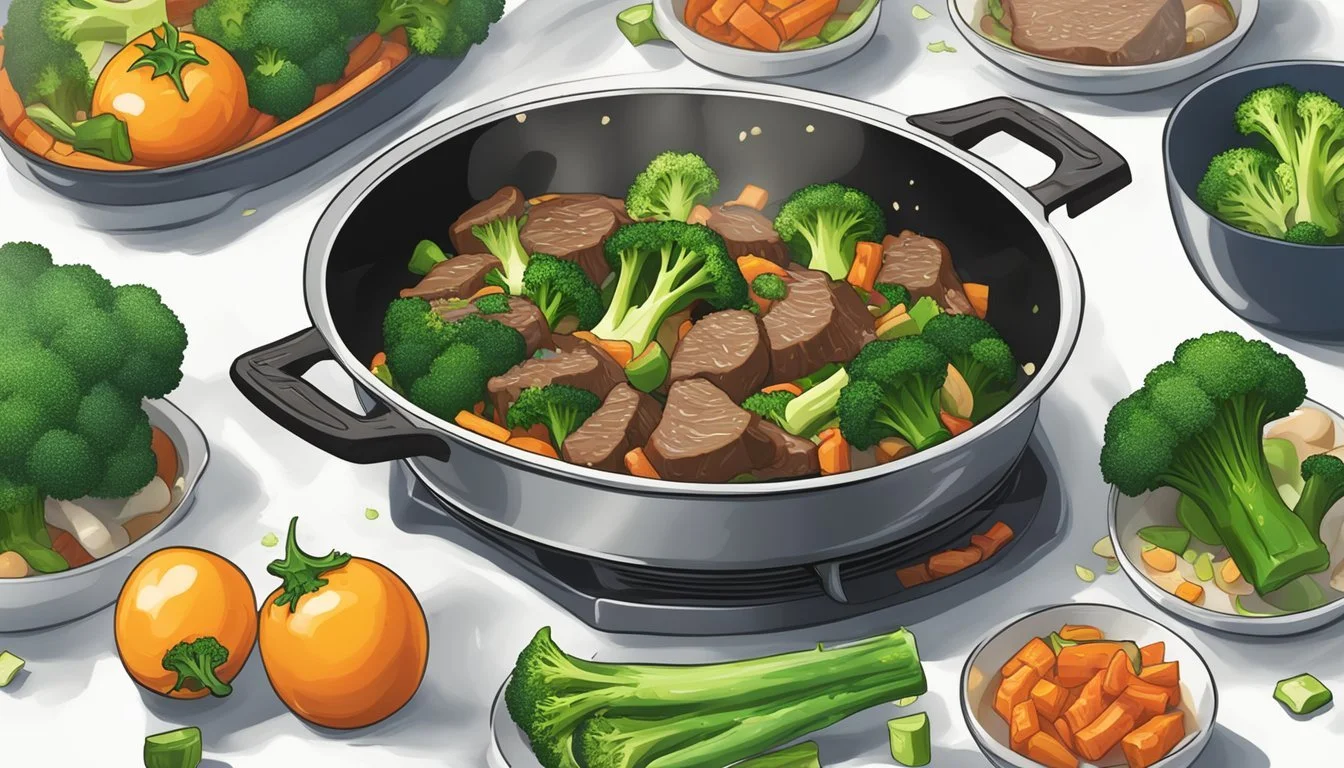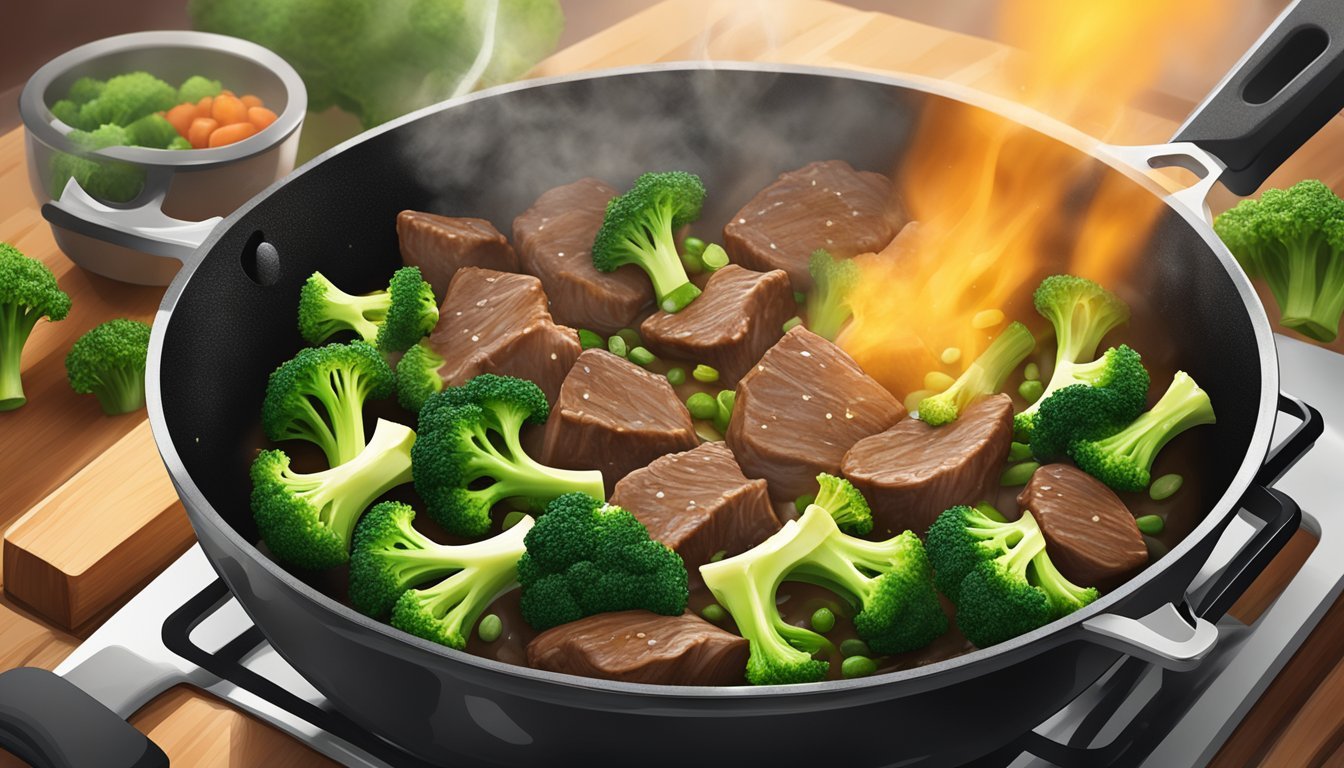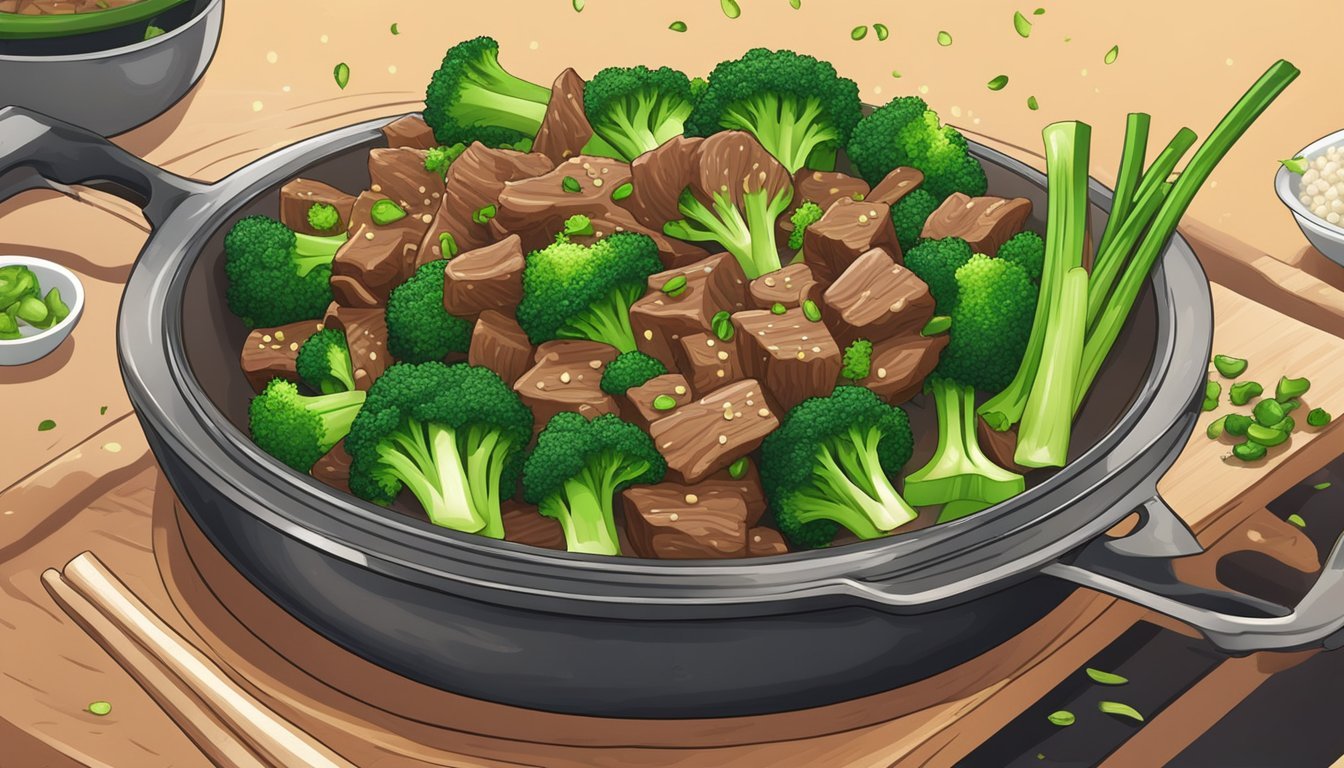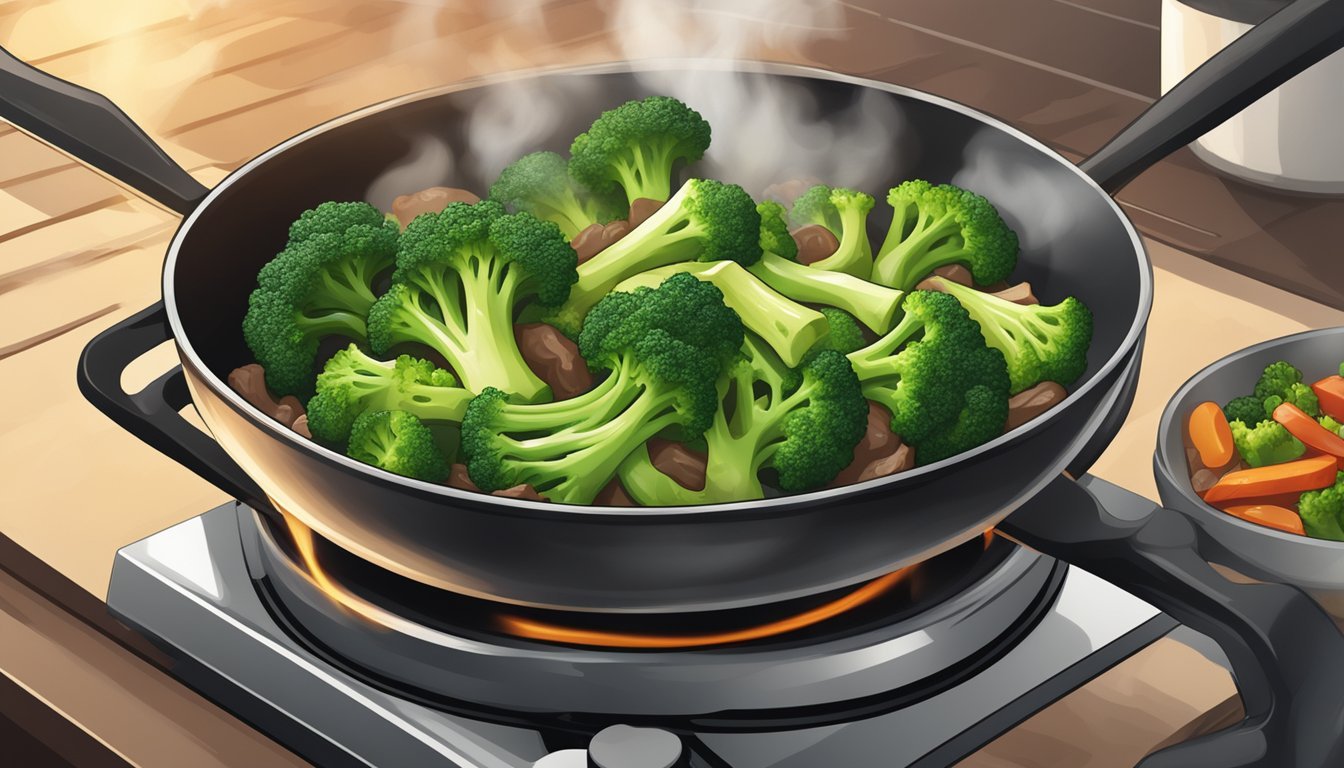Best Way to Reheat Beef and Broccoli Stir-Fry
Ensuring Crisp Veggies Every Time
Reheating beef and broccoli stir-fry while maintaining the crispness of the vegetables can be a challenge for many. The key lies in choosing the right reheating method to ensure that the beef remains tender and the broccoli vibrant and crisp, mirroring the original texture and flavor of the dish. Preserving the quality of this popular Chinese dish after it has been refrigerated requires a method that evenly distributes heat without overcooking.
The most effective techniques for reheating involve using appliances and tools that most have in their kitchen. When done correctly, these methods can restore the beef and broccoli stir-fry to a state that closely resembles its freshly-cooked condition. It is crucial to approach the reheating process with care, as the right balance of time and temperature can make the difference between a satisfying meal and one that falls short of expectations.
Understanding Reheating Fundamentals
When reheating beef and broccoli stir-fry, it is crucial to maintain the texture of the vegetables and the flavor of the dish. Selecting the appropriate reheating method is key to achieving this.
Importance of Texture and Flavor Retention
Reheating leftovers, particularly stir-fry dishes, requires careful temperature control and the right technique to preserve their crisp texture and rich flavor. The texture of the vegetables can become soggy if overheated, while the flavor can diminish if reheated improperly. Moisture management is vital in preventing a mushy outcome and ensuring that the beef remains tender.
Reheating Methods Overview
There are several reheating methods that can be effective for stir-fry:
Stovetop: Reheating on the stovetop at a medium-high temperature for a short period can help to keep the broccoli crisp. One should add a splash of water or oil to the pan to prevent sticking and to reintroduce moisture.
Oven: If using an oven, spreading the stir-fry in an even layer on a baking sheet and covering with foil can help with uniform heating. The temperature should be set no higher than 350ºF to avoid overcooking.
Microwave: Though not ideal for texture, the microwave can be quick. To retain moisture, one might cover the dish with a microwave-safe lid and use a medium power setting.
Each method should be chosen based on how much stir-fry is being reheated and what equipment is available. Temperature control and adding moisture, where necessary, are the fundamentals to reheating beef and broccoli stir-fry while keeping the vegetables crisp and the dish flavorful.
Preparatory Steps Before Reheating
Ensuring that beef and broccoli stir-fry retains its quality requires proper preparatory steps before reheating. These steps focus on maintaining the texture of vegetables and the overall flavor of the dish.
Proper Storage Techniques
Stir-fry leftovers should be stored in an airtight container to prevent the ingress of moisture and other contaminants that could affect the dish's taste and texture. One should transfer the stir-fry to the container as soon as it reaches room temperature, which usually takes about 30 minutes. This practice helps to thwart bacterial growth.
Do:
Allow the stir-fry to cool to room temperature.
Use a shallow airtight container to aid in even cooling.
Don't:
Leave the stir-fry out for more than two hours to avoid bacteria.
Use containers that are not sealed properly as this can lead to a loss of quality.
Pre-Reheating Temperature Management
Before reheating the stir-fry, one should ensure that the dish is at a temperature conducive to heating evenly. The ideal method involves transferring the leftovers from the refrigerator and letting them sit at room temperature for about 10-15 minutes. This step reduces the thermal shock to the vegetables and beef, preserving their crispness and texture during the reheating process.
Do:
Take out the desired portion of stir-fry and let it sit at room temperature briefly.
Don't:
Skip this step as immediate reheating from a cold state may result in unevenly heated food.
Reheating in a Skillet
Reheating beef and broccoli stir-fry in a skillet on the stovetop is an efficient method to maintain the desirable texture and flavor. This approach uses high heat to quickly reheat the dish while preserving the crispness of the vegetables.
Advantages of Skillet Reheating
The skillet is preferred for its ability to reheat food evenly and quickly. Using a skillet on the stovetop allows the cook to:
Control heat accurately and adjust it as needed.
Maintain texture, as high heat can help restore the crispness of the broccoli and prevent the beef from becoming too tough.
Enhance flavor, since a little bit of oil can aid in caramelizing the edges of the beef, adding an extra dimension to the dish.
Step-by-Step Skillet Reheating
One should follow these steps to effectively reheat beef and broccoli stir-fry using a skillet:
Prepare the Skillet:
Place the skillet on the stovetop.
Preheat it on medium-high heat.
Add Oil:
Pour a small amount of oil (about one to two tablespoons) into the skillet.
Swirl to coat the surface evenly.
Reheat the Stir-Fry:
Once the skillet is hot, add the leftover beef and broccoli stir-fry.
Stir continuously to ensure even reheating and to prevent sticking.
Monitor Closely:
Keep an eye on the dish as it reheats, adjusting the heat if necessary.
Typically, the stir-fry should be heated through in about five minutes.
By carefully following these steps, one can achieve a rejuvenated and satisfying beef and broccoli stir-fry, with vegetables that are as crisp as when they were first cooked.
Reheating Using a Microwave
Reheating beef and broccoli stir-fry in the microwave can be quick and convenient, especially if one pays attention to technique and moisture retention to maintain the crispeness of the vegetables.
Microwave Reheating Technique
To reheat beef and broccoli stir-fry in a microwave, one should use a microwave-safe dish. It's best to spread the stir-fry in an even layer so that it can heat uniformly. Adding a bit of moisture can help prevent the dish from drying out. Here's a quick step-by-step guide:
Spread the stir-fry in a microwave-safe dish.
Drizzle a small amount of water or broth over the stir-fry to add moisture.
Cover the dish with a microwave-safe lid or a damp paper towel to trap steam and keep the vegetables crisp.
Microwave on medium power in one-minute bursts, stirring in between each minute to promote even heating.
Precautions for Microwave Use
When using the microwave to reheat food, several precautions should be taken to ensure safety and quality:
Microwave-safe materials: Always use dishes and covers that are designated as microwave-safe.
Stirring: Regular stirring helps to distribute heat evenly and prevent overcooking.
Steam build-up: Be careful when removing the cover after reheating as steam can build up and cause burns.
Density: Note that denser parts of the stir-fry, like the beef, may take longer to heat than the broccoli.
By following these instructions and precautions, one should be able to reheat their beef and broccoli stir-fry quickly and still enjoy a meal that tastes freshly cooked.
Reheating in an Oven or Toaster Oven
When reheating beef and broccoli stir-fry in an oven or a toaster oven, key considerations include using the right temperature to ensure even heating and employing techniques to maintain the vegetables' crispness.
Oven Reheating Method
Preheat the oven to 350ºF to ensure a moderate temperature that warms the stir-fry without drying it out. To reheat, one should:
Spread the stir-fry in an even layer on a baking tray. This allows heat to distribute evenly.
Cover the dish with aluminum foil to prevent the top from burning and to trap moisture, ensuring that the beef does not dry out.
The use of aluminum foil helps retain moisture, but it should be removed a few minutes before the end of reheating if a crisper texture is desired for the broccoli.
Maintaining Crispiness in the Oven
To keep the broccoli crisp, they should:
Reheat the stir-fry uncovered for the last couple of minutes in the oven.
Monitor closely to prevent overcooking, which can result in sogginess.
By using these methods, the texture of both the beef and broccoli is preserved, replicating the freshness of the dish as if it were just made.
Utilizing an Air Fryer for Reheating
When reheating beef and broccoli stir-fry in an air fryer, the key is to preserve the dish's crisp texture. This method ensures quick and even heating while maintaining the stir-fry's desirable qualities.
Air Fryer Reheating Process
Preparation: Prior to reheating, the beef and broccoli stir-fry should be placed in the air fryer basket in a single layer without overcrowding.
Temperature Setting: Set the air fryer to 350°F (175°C), an optimal temperature for reheating while retaining crispness.
Cooking Time: Heat the stir-fry for approximately 3-4 minutes. If the ingredients aren't evenly warmed or if extra crispness is desired, continue reheating in one-minute increments, checking after each.
Intermediate Checks: Halfway through the heating process, use tongs to stir the stir-fry gently, ensuring even exposure to the hot air.
By following this process, the air fryer can bring leftovers back to life with a crisp texture that rivals fresh cooking.
Benefits of Air Frying Leftovers
Crispiness: The air fryer excels at reheating without sogginess, using circulating hot air to restore the crispness to the beef and vegetables.
Convenience: This method is much quicker than using an oven and does not require preheating, making it a convenient choice for busy individuals.
Temperature Control: Precision in temperature setting allows for careful reheating, avoiding overcooking while achieving the desired warmth and texture.
Additional Reheating Tips and Tricks
When reheating beef and broccoli stir-fry, maintaining the ideal moisture balance and avoiding overcooking are crucial for preserving flavors and textures.
Using Liquids to Enhance Moisture
One can strategically use liquids like broth or water to reintroduce moisture into the stir-fry. Adding a small amount of broth can enhance the dish's flavor, while water prevents drying without altering the existing taste profile.
Technique:
Drizzle a tablespoon or two of broth or water over the stir-fry.
Cover the dish to trap steam and evenly distribute the moisture.
Avoiding Overcooking
It's important to reheat the stir-fry just enough to warm through, preventing the vegetables from losing their crispness and the beef from becoming tough.
Best Practices:
Use a medium heat setting, as high heat can quickly overcook the ingredients.
Heat incrementally, checking the dish's temperature frequently to avoid surpassing the optimal reheating point.
Serving and Garnishing After Reheating
Once your beef and broccoli stir-fry is thoroughly reheated, serving it properly with the right garnishes can make a significant difference in taste and presentation.
Final Touches for Enhanced Flavor
Garnishes play an integral role not just in enhancing the visual appeal of a dish but also in complementing its taste. For a beef and broccoli stir-fry, consider the following garnishes to add just before serving:
Sesame Seeds: A sprinkle of toasted sesame seeds adds a nutty flavor and a delicate crunch to the dish.
Green Onions: Finely sliced green onions provide a burst of color and a sharp, fresh contrast to the savory beef.
Soy Sauce: A light drizzle of soy sauce can intensify the umami taste while ensuring that the stir-fry doesn't become dry.
When adding these garnishes, it's best to do so with a light hand to not overpower the primary flavors of the beef and broccoli. The goal is to amplify the dish's existing flavor profile subtly while providing texture and color contrast that makes the dish visually appetizing.
The Best Practices for Reheating Beef and Broccoli Stir-Fry
When reheating beef and broccoli stir-fry, preserving the crispness of the broccoli and the tenderness of the beef is essential. Applying the correct reheating technique is key to maintaining the quality of the dish.
Determining the Optimum Reheating Method
Stovetop Reheating: Reheating beef and broccoli stir-fry over the stove is the preferred method. They should heat a skillet over medium-high heat and add a small amount of oil. Once the oil is hot, they can add the stir-fry and cook it for a few minutes until it's evenly heated through. This method helps to keep the vegetables crisp and the beef juicy.
Heat the Skillet: Medium-high heat
Oil: A small amount (1-2 teaspoons)
Cooking Time: A few minutes until heated through
Microwave Reheating: If they opt for a microwave, it should be done with care. They should place the stir-fry in a microwave-safe bowl, cover it with a paper towel to prevent moisture loss, and reheat it at medium power in short intervals (such as 90 seconds), stirring in between to distribute the heat evenly.
Power Level: Medium
Intervals: 90 seconds, then stir
Covering: Microwave-safe bowl with a paper towel
When using any method, they should ensure not to overheat the dish to prevent overcooking the beef and losing the broccoli’s crispiness. By following these specific techniques, they can enjoy a reheated beef and broccoli stir-fry that is as close to freshly made as possible.

